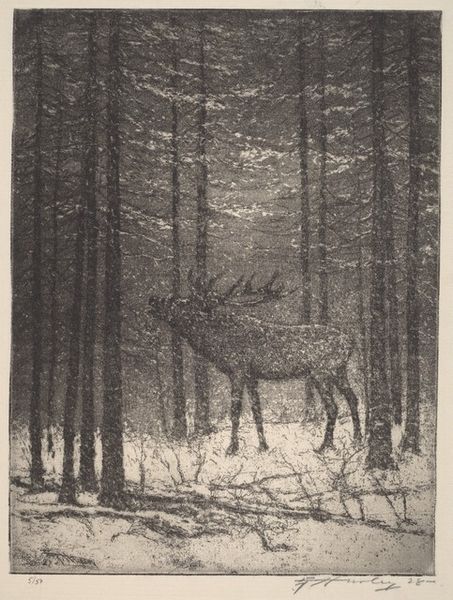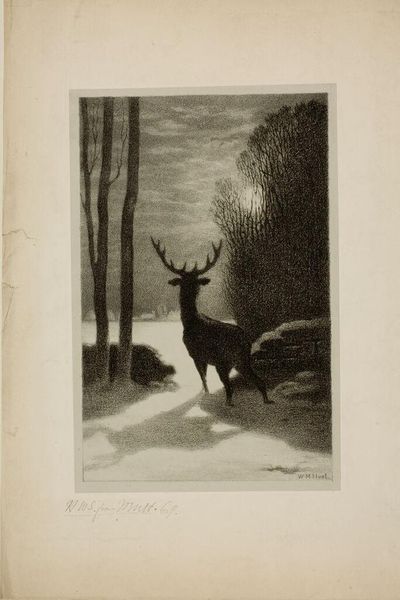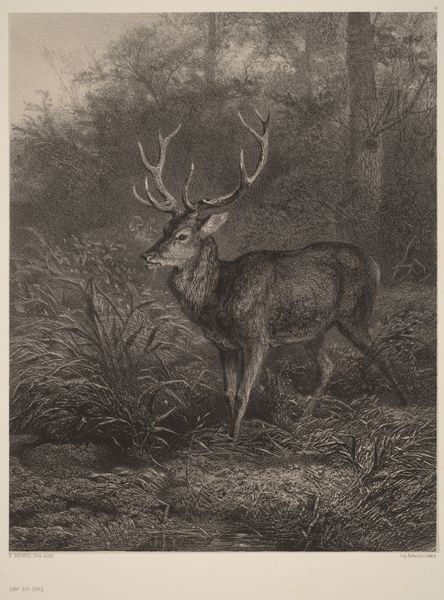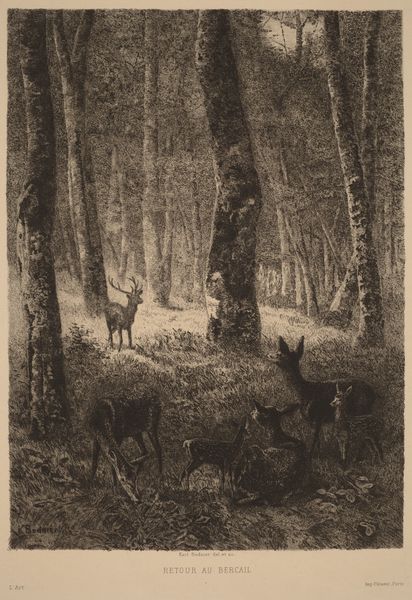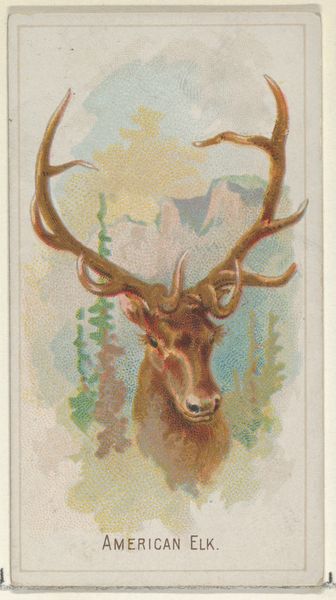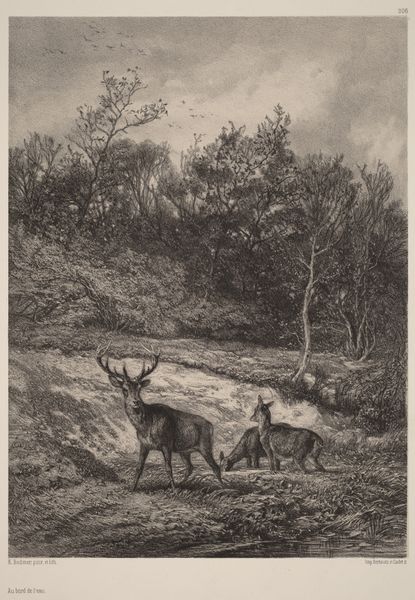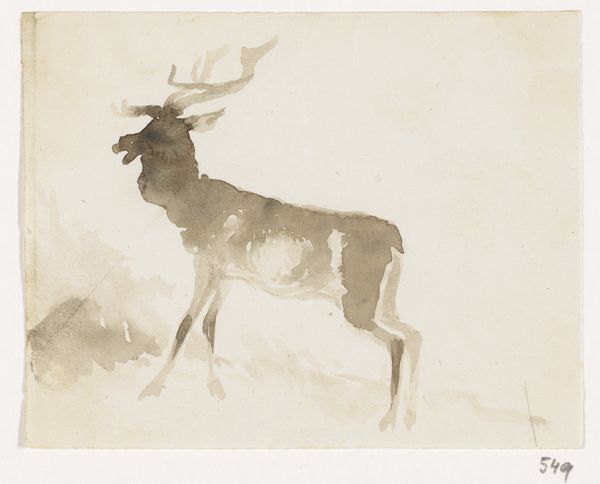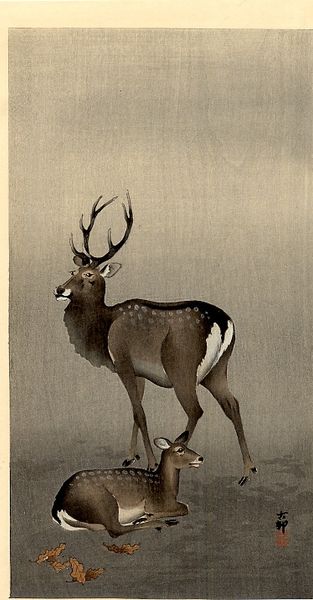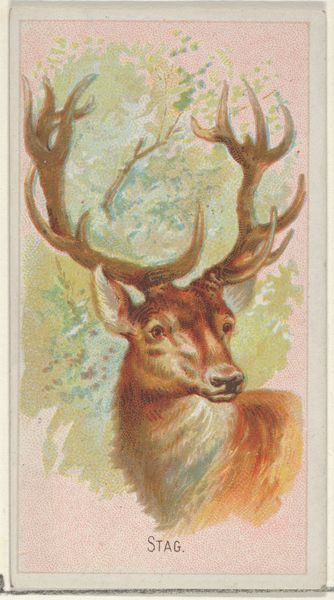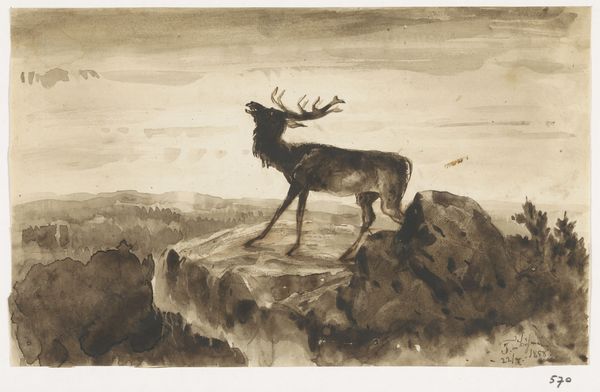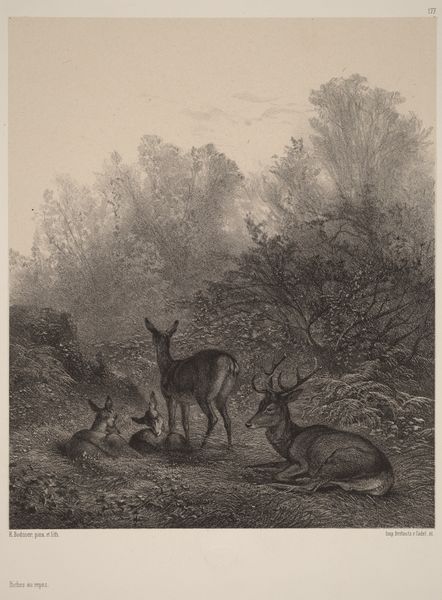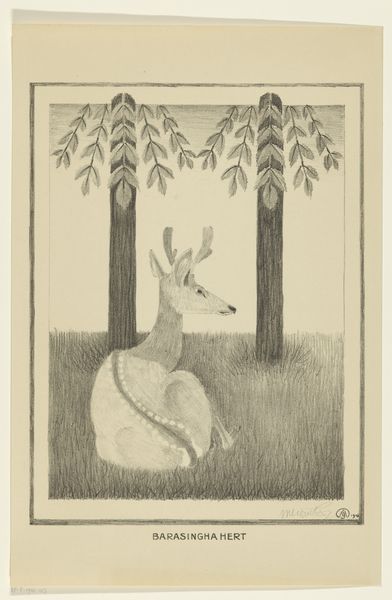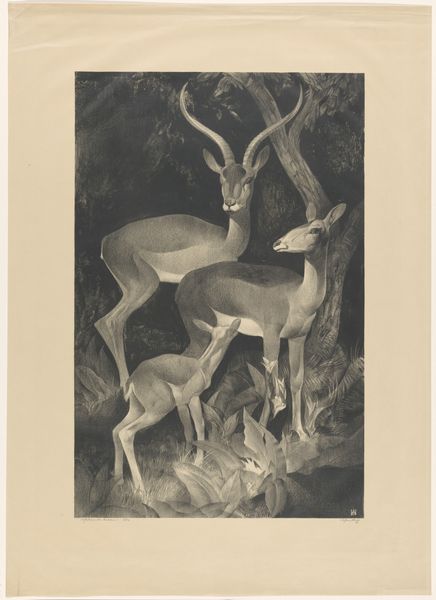
Dimensions: image: 15.24 × 23.81 cm (6 × 9 3/8 in.) sheet: 27.94 × 35.56 cm (11 × 14 in.)
Copyright: National Gallery of Art: CC0 1.0
Curator: Look at the quiet stillness of this graphite drawing. This is William Morris Hunt's "Stag in the Moonlight" from 1857. Editor: The dramatic light and stark contrast gives it a haunting, almost unsettling feel. What's compelling about this rendering of a solitary stag? Curator: Well, Hunt was working in the wake of Transcendentalism. Solitary figures set against majestic, sublime landscapes were vehicles for exploring individual spirituality and the relationship between humanity and nature. The Stag becomes almost a symbol of rugged independence, stark against a luminescent backdrop. Editor: The stag certainly emerges from a space thick with symbolic weight. From ancient Celtic traditions, where the stag represents virility and the hunt, to more contemporary ecological understandings of keystone species... Even the moonlight is loaded; madness, the feminine divine. I am curious about the role of the hunt in mid-19th century America. Were there societal implications? Curator: Definitely. Hunt occupied a complicated space as an artist of privilege. While on one hand you have an image imbued with natural majesty, these kind of romantic images were popular amongst powerful landowners invested in controlling natural resources. He wasn't just portraying nature; he was implicated in how it was being viewed, exploited and codified through a specific social lens. His depictions, even when celebrating the sublime, served to bolster an increasingly exploitative system. Editor: And we still grapple with this legacy. Our artistic engagement with the natural world is never divorced from political and economic realities. Thinking about our responsibilities when documenting landscape and wildlife... Are we merely aestheticizing the environment or actively participating in its preservation and fair distribution of its resources? The sharp detail and precision, even in rendering shadow, strikes me as especially relevant to these considerations. Curator: Yes, exactly. Hunt's technical skill is undeniable, and this work exists in an important place where aesthetics intersect with questions of value, exploitation, and cultural memory, prompting us to constantly reassess our role as both observers and active participants in an increasingly complex and environmentally vulnerable world. Editor: Food for thought, definitely gives me a deeper appreciation for this powerful yet problematic image.
Comments
No comments
Be the first to comment and join the conversation on the ultimate creative platform.
